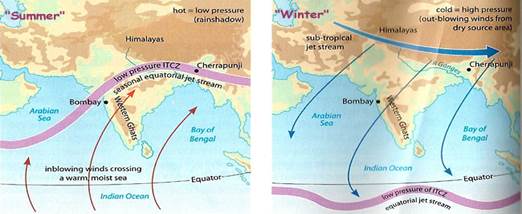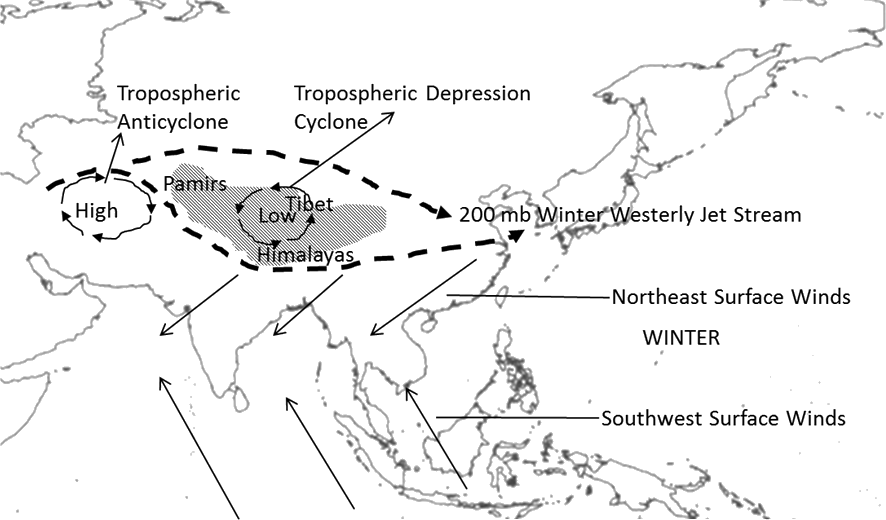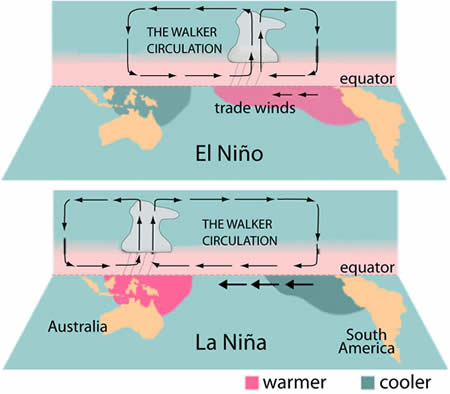Discuss the factors that affect Indian Mansoon and explain its mechanism.
Answer
Factors affecting the Indian Monsoon and Its Mechanism
Physiography
Temperature


Direction of rain bearing winds
Seasonal distribution of rainfall
Amount of rainfall
Form of precipitation
Global climatic phenomenon


Sai Charan 9 years
Indian Monsoon:
1) South West Monsoon:
- 80% of rainfall we are getting from South West Monsoon.
-In summer land is getting heated and forms a heat low pressure in Indian Main lands.
--This in turn pulls the ocean current from Sea to land.
- Arabian Sea current from the South of Indian Ocean and Bay of Bengal current from the South of Andaman Sea flows in to the mainland.
-The Himalayas acts as barrier to these monsoon current and deflects it towards low pressure area causing South West Monsoon Rainfall(May - September)
2) NorthEast Monsoon:
-Same as SWM , Himalayas acts as a Barrier in protecting the heavy Cold current from Northern side.
-During (September - October) the landmass in the northern parts of India is cool so it forms high pressure.
-This high pressure pushes the cold current from the land to sea through Bay of Bengal and Southern States gets rainfall.